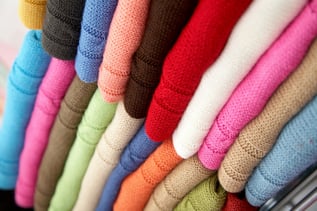Comfort is an integral part of patient well-being and it starts with their bed linens and gowns. Patients dislike fabric that is too stiff and rough, especially if it makes contact with their most sensitive areas. Patient comfort should be made a priority in hospitals and similar facilities to ensure patients feel supported and cared for during the entire healing process. However, in the past it was difficult to determine a patient's comfort level without asking each one individually.
There is now a way to measure the comfort experienced with certain fabrics using quantifiable data through the Kawabata Evaluation System developed by Dr. Seuo Kawabata. The Kawabata Evaluation System is a comprehensive way to determine the properties of fabrics using testing instruments, according to the Ahmedabad Textile Industry’s Research Association. This takes the guesswork out of making sure patients feel good because the data backs it up.
WHAT FABRIC FEATURES DOES THE KAWABATA EVALUATION SYSTEM TEST?
 There are several qualities of fabric that affect patient comfort, such as softness and flexibility, that the system tests. According to the RMIT University report on the comfort and protection of advanced textiles, the Kawabata Evaluation System tests the following:
There are several qualities of fabric that affect patient comfort, such as softness and flexibility, that the system tests. According to the RMIT University report on the comfort and protection of advanced textiles, the Kawabata Evaluation System tests the following:
- Shear
- Tensile
- Compression
- Bending
- Surface
These qualities are measured by machines designed by Dr. Kawabata. For example, the Shear Test using the KES-FB1 machine tests shear stiffness by moving the opposite ends of fabric in opposing directions to see how the fabric slides against one another. If there is less resistance to the shearing, the fabric is considered softer.
WHY IS FABRIC QUALITY IMPORTANT TO TEST?
The choice of fabric can affect the patient's recovery process. For example, the breathability of the fabric and its ability to wick away moisture, can reduce health risks, such as pressure ulcers. The Kawabata Evaluation System performs tests for real-world conditions like the Cooling Ability/Breathability Test to simulate patient sweat and how the fabric reacts to it.
The combination of heat and moisture could prove harmful for patients. The Agency for Healthcare Research and Quality in a report on reducing pressure ulcers in hospitals notes that skin that is moist is more likely to tear. Breathable fabrics will more easily allow patients to remain dry and avoid skin damage.
The data related to stiffness, softness and roughness will give healthcare providers a more well-rounded idea of important fabric characteristics, allowing them to make better choices when it comes to sheets or gowns.
 With the importance of fabric quality for both health and well-being, hospitals should choose the most comfortable gowns, such as SOLUS™ patient gowns. These gowns tested high on the Kawabata Evaluation System, providing superior moisture protection and making sure skin feels dry.
With the importance of fabric quality for both health and well-being, hospitals should choose the most comfortable gowns, such as SOLUS™ patient gowns. These gowns tested high on the Kawabata Evaluation System, providing superior moisture protection and making sure skin feels dry.
Through measuring patient comfort in quantifiable ways like the Kawabata Evaluation System, healthcare providers know the fabrics they select are the best for their patients.
Download the SOLUS™ white paper to find out how the SOLUS™ patient gown performed on the Kawabata test and see whether this gown meets the needs of your patients and medical facility.








